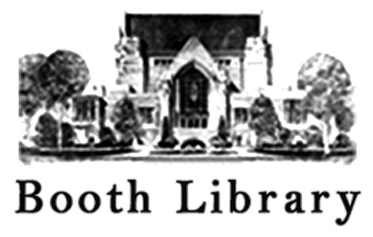Dust, Drought, and Dreams Gone Dry
Supporting Exhibits
Expedition Endurance: Without Water, We Are Nothing
North LobbyCurators: Cameron Craig and Nathan Page
Water is the essence of life on our planet. It is the bond between nature and humanity that is Earth. In our daily hustle and bustle we forget the importance of this seemingly endless resource. However, it is the redistribution of water through climate change and human modification of the environment that causes life to become a challenge when this precious resource dwindles.
New Deal Poster Art in Illinois
Marvin FoyerCurator: Ellen Corrigan
The Dust Bowl occurred when the nation was already suffering from the devastating
effects of the Great Depression. In the 1930s several federal work relief programs were
instituted as part of President Franklin D. Roosevelt’s New Deal initiative, including
the Works Progress Administration (later Work Projects Administration) and its
subsidiary Federal Art Project. This exhibit presents posters created by the state-level WPA/FAP in Illinois. The distinctive graphic style of these posters, with simple, bold
shapes and colors produced using an innovative screen printing technique, is still
widely recognized and appreciated today.
Not Just Out West: Illinois Dust Storms, 1934 and Beyond
Marvin FoyerCurator: Lee Whitacre
While Illinois was not within the defined Dust Bowl geographical parameters, the state was periodically adversely affected by dust storms wielding from the Great Plains. This exhibit explores the hallmark May 10-12, 1934, dust storm, which, in its enormity and uniqueness, served as a political motivator for national conservation and agricultural policies, as well as a defining moment in Illinoisans’ lives notated in diaries and letters. The significance of the May 1934 dust storm has reverberated throughout subsequent years of drought and dust storm conditions, remaining a benchmark comparison as THE storm above all others.
Dust Bowl Migration and Government Response
Marvin Foyer
Curator: Steve Brantley
This exhibit will explore issues related to the social and economic impact
of the Dust Bowl on diverse populations and the governmental response
to natural disasters as manifested in social programs of the depression
era.
The Grapes of Wrath on Film
Marvin FoyerCurator: Bradley Tolppanen
The Grapes of Wrath motion picture was a commercial and critical success upon its
release in 1940. The film was awarded two Academy Awards and in 1989 was added to the
National Film Registry. Edmund Wilson, a journalist and critic, wrote that The Grapes of
Wrath was “probably the only serious story on record that seemed equally effective as a
film and as a book.”
Fiction and the Dust Bowl
Marvin FoyerCurator: Sarah Johnson
These works of fiction, all set in America during the Dust Bowl years, depict
the experiences of people living through this ecologically and economically
devastating time. Topics covered include migration, unemployment, poverty,
period art and music, and the determination to persevere. All books in this
exhibit are available for checkout.
Mapping the Dust Bowl
Marvin FoyerCurator: Chris Laingen
The Dust Bowl was caused by two factors: over- and improper use of the land and a drought. This work will highlight geographic patterns and trends of agricultural land use, climate conditions, population change, and other socioeconomic/ecological variables before, during and after the Dust Bowl in the Great Plains.
New Deal Photography
Marvin FoyerCurators: Marlene Slough and Lee Whitacre
The Farm Security Administration (FSA) was one among many of President
Roosevelt’s New Deal programs that employed photographers to influence public
policy and opinion. Between 1935 and 1942, the FSA Historical Section amassed more
than 75,000 images documenting the extreme economic, social and environmental
conditions in rural American small towns and farms. This exhibit presents images of
the Dust Bowl from the FSA collection.
Gilbert C. Fite: EIU’s Agricultural Historian
Reference HallwayCurator: Pamela Ferrell
This exhibit celebrates President Gilbert C. Fite, EIU’s expert on farm life. Fite served as EIU president from
1971 to 1976. Born in 1918, he was raised on South Dakota farms in the 1920s and 1930s, growing up during
the Depression and experiencing the effects of the Dust Bowl. He garnered a scholarly reputation as an
agricultural historian and wrote extensively on various aspects of 19th- and 20th-century American farm life.
The Grapes of Wrath, by John Steinbeck
Reference HallwayCurator: Janice Derr
Perhaps the most vivid images we have of the Dust Bowl come from John Steinbeck’s 1939 novel, The Grapes of Wrath. Winner of the National Book Award and the Pulitzer Prize, the novel was considered controversial at the time. This exhibit explores John Steinbeck; his classic novel, The Grapes of Wrath; and its lasting impact.
The Dust Bowl Era: Families and Homes Disrupted
Ballenger Teachers CenterCurators: Jeanne Goble, Dominique Gilliam, Christina K. Jenkins and Kevin Lux
This exhibit will display images, books and teaching resources relating to the Great Depression and the Dust Bowl era.










